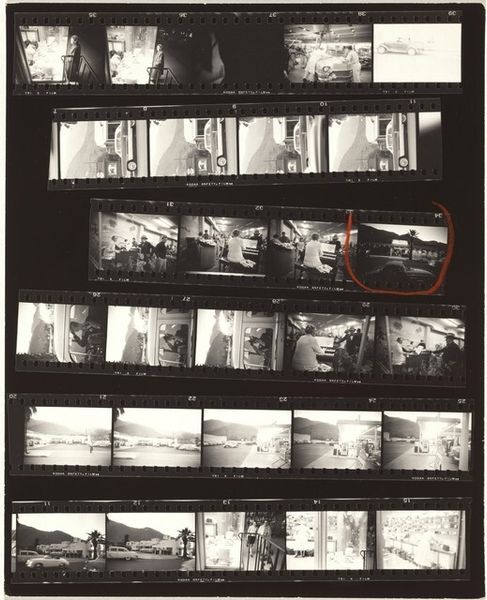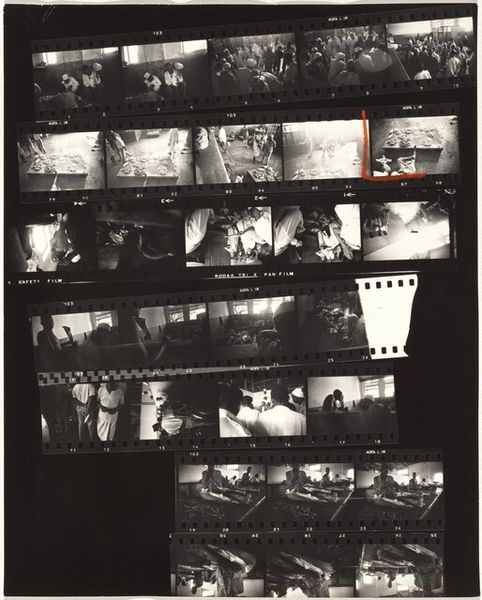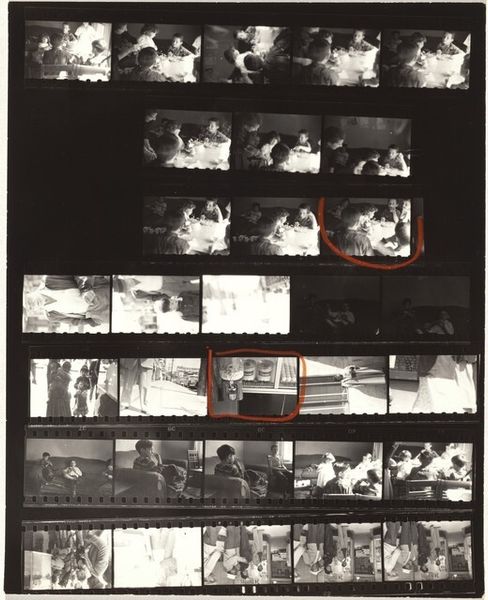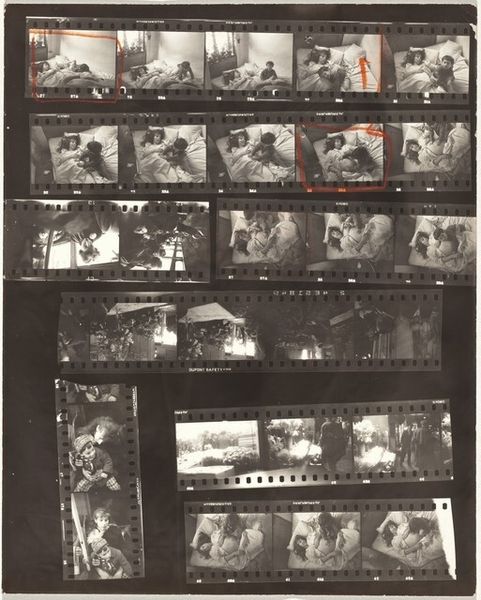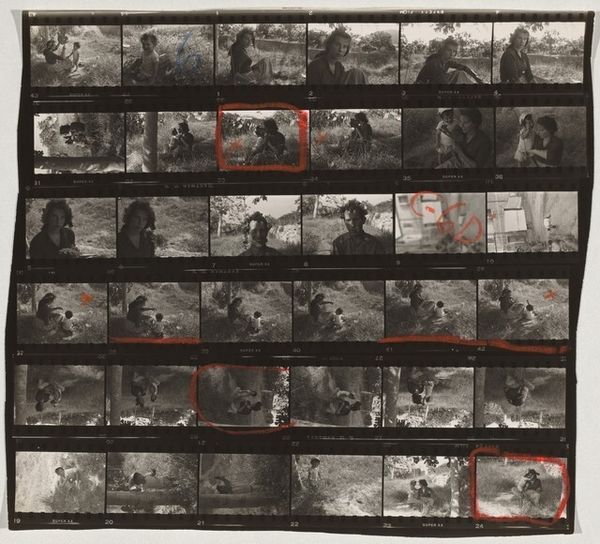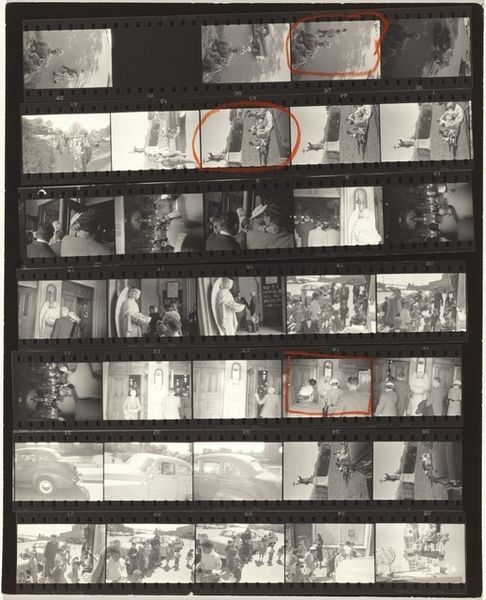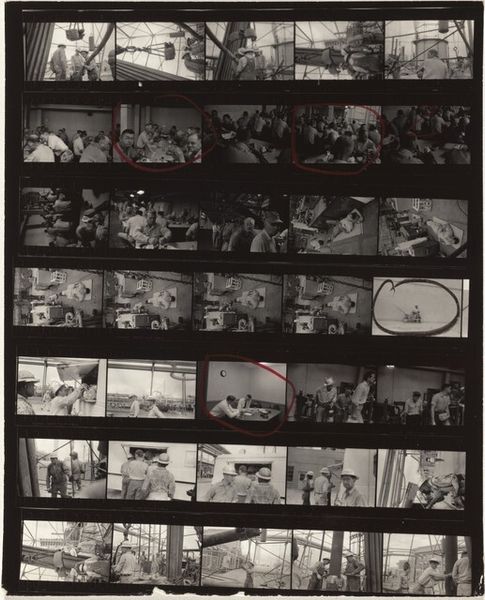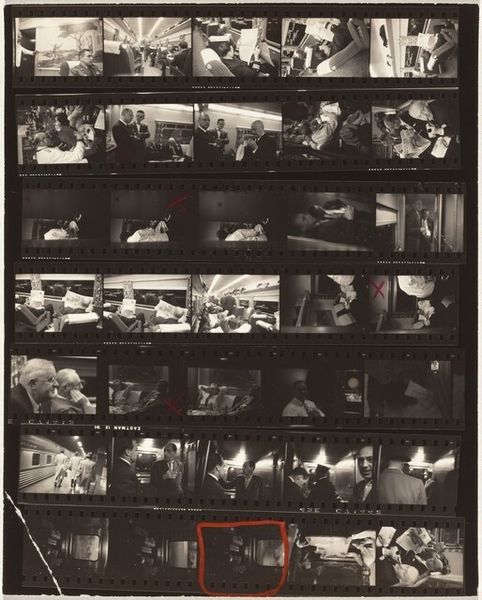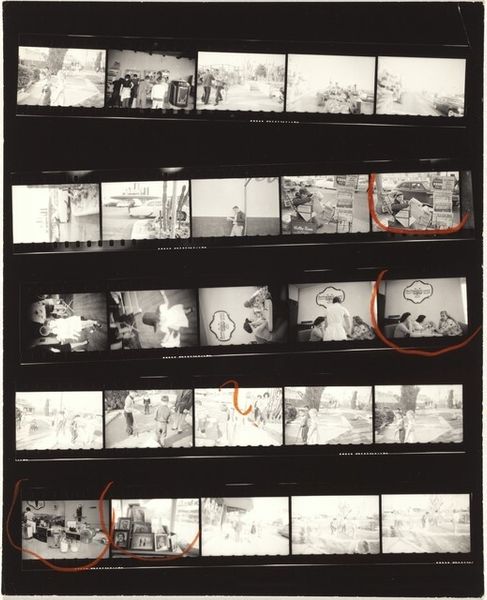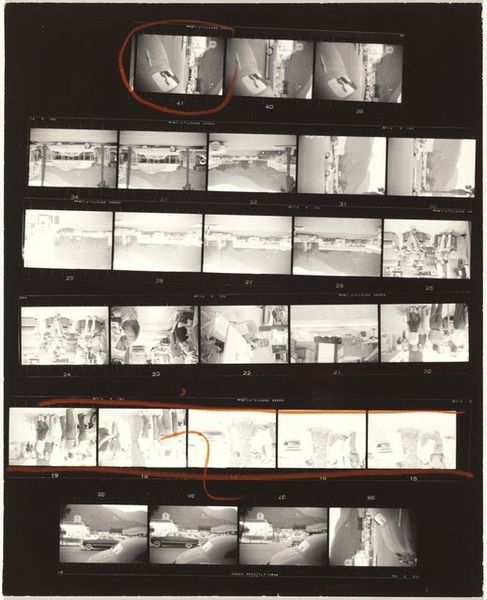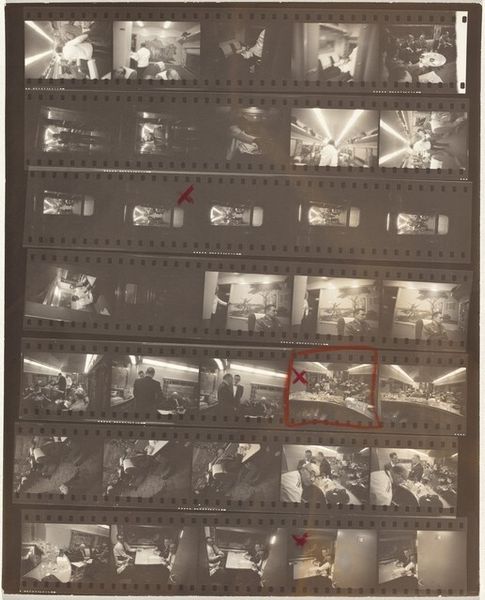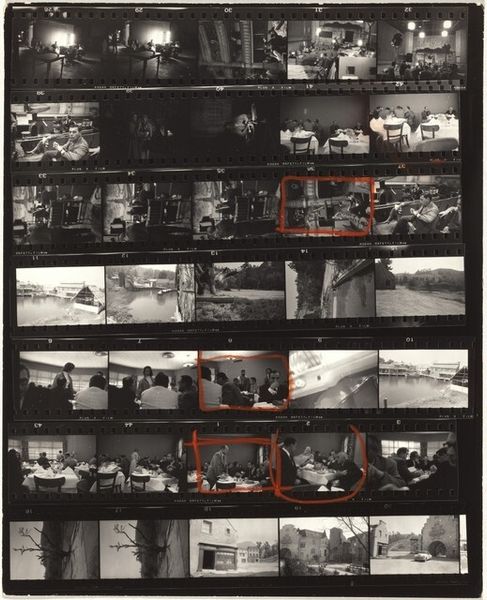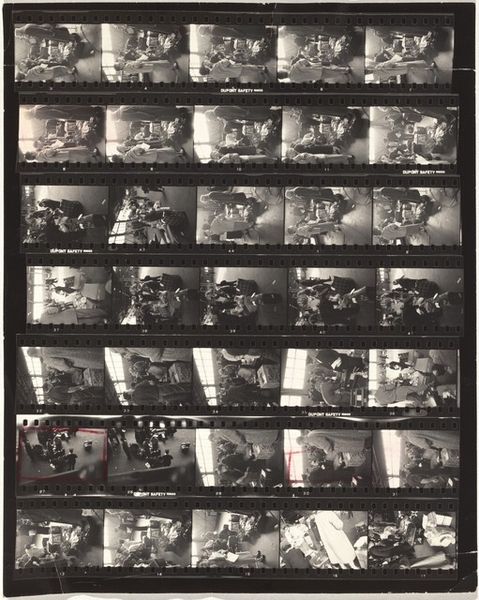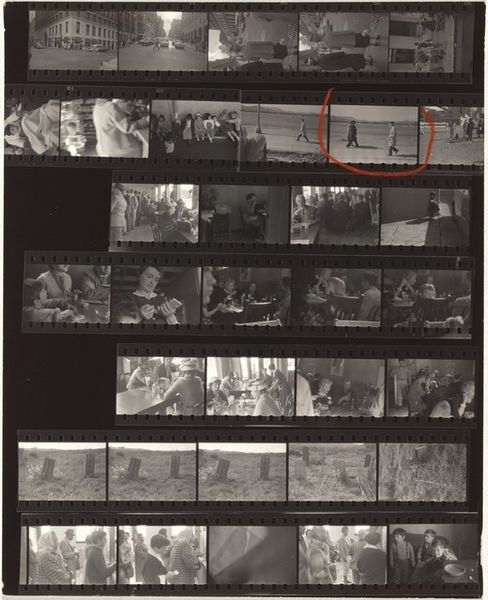
Dimensions: sheet: 25.3 x 20.3 cm (9 15/16 x 8 in.)
Copyright: National Gallery of Art: CC0 1.0
Curator: This is "Mary and Andrea in hospital V" by Robert Frank, created in 1954. What’s your first reaction to it? Editor: Somber. Vulnerable. A collection of fading moments in time that speak to loss and the frailty of life. Curator: This photogram gives us insight into Robert Frank's photographic process. You can see the full roll of film—the labor made visible! Editor: The repetitive images… They're haunting. The figure lying in bed appears across the frames like a recurrent dream. Do you think this repetition is a symbolic representation of a larger psychological state? Curator: Definitely! The materials are simple: photographic film, chemicals, and light, transformed through skilled darkroom labor into this tangible piece. But Frank’s labor doesn’t end in the darkroom; he forces the viewer to participate by piecing together the sequence of the photos and forming our own conclusion. The scratches on the negative are just another detail that marks Frank's manual labor as an artisan photographer. Editor: Indeed, those imperfections add another layer of significance. Scratches might indicate the physical and emotional damage endured over time, like scars that memorialize suffering and pain. Curator: I am drawn to the economic realities that inform access to materials and artistic production. This work feels honest because it isn't glossy. It emphasizes the gritty realities of existence. The visible film strip becomes an almost diaristic piece of evidence. Editor: Yet the stark light and shadow cast upon the patient convey isolation—universal themes of suffering that reach beyond mere documentation. The symbolism here evokes traditional images of lamentation and grieving from art history. Curator: Well, this piece gives us a fresh view on how documentary can function, pushing against norms, emphasizing both artistic and physical means of production. It also prompts consideration of who holds the economic power and whose stories are prioritized. Editor: Looking at it now, I agree. Both its technical composition and raw symbolism can bring about complex feelings related to grief, acceptance, and resilience. Curator: Thank you for exploring this piece with me, diving into the details of artistic intention and how labor manifests. Editor: It's been a real privilege. Thank you.
Comments
No comments
Be the first to comment and join the conversation on the ultimate creative platform.
